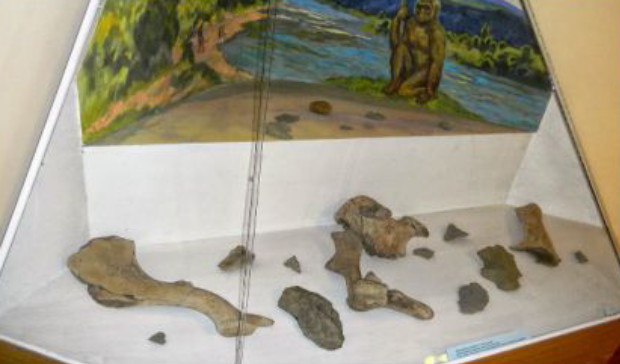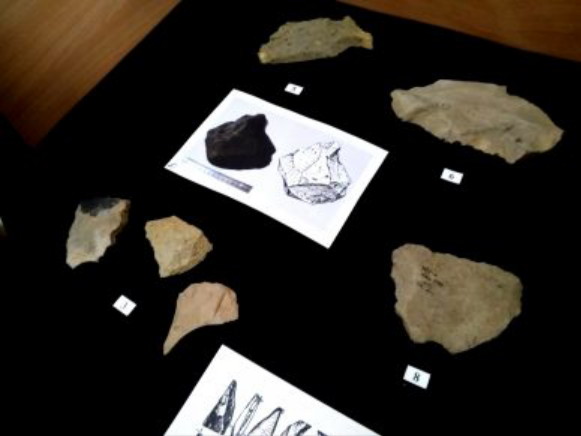Korolevo archeological site
Korolevo archeological site [Королевська стоянка; Korolevska stoianka]. A multi-occupational archeological site of the Paleolithic Period situated on the left bank of the Tysa River near the town (smt) of Korolevo in Vynohradiv raion, Transcarpathia oblast. Discovered in 1974 during an expedition organized by the Institute of Archeology of the Academy of Sciences of the Ukrainian SSR headed by Vladyslav Hladylin, Korolevo is the site of the oldest Paleolithic occupation not only in Ukraine, but in all of eastern Europe. The excavations (to the depth of 12 meters) of an area of 1,500 sq m on the high terrace above the Tysa revealed 14 cultural layers spanning the time periods from the Lower to the Upper Paleolithic. Over 100,000 artefacts have been found at the site. The oldest found Lower Paleolithic stone tools (at the Assemblage VIII at the Hostryi Verkh landmark) have been dated back to ca. 950,000 BC, but this dating has been questioned by some scholars. Other older artefacts have been dated to ca. 550,000 BC.
Seven of the excavated Lower Paleolithic cultural layers at the Korolevo site belong to the Acheulean culture and are related to other Acheulean sites in Transcarpathia: the Rokosovo archeological site and the Malyi Rakovets archeological site. No human remains were found at these sites, so it is difficult to determine what species of early humans had occupied them. Based on the skull fragment found in a nearby site in Hungary, scholars hypothesize that the Acheulean sites in Korolevo were inhabited by a species related to Sinanthropus pekinensis. Other theories attribute the Acheulean tools found at the Korolevo site to Homo erectus. Six other cultural layers excavated at this site produced numerous tools dating back to the Mousterian culture (150,000 to 35,000 BC). These tools had, most likely, been fashioned by Neanderthals. There is also one cultural layer dating back to the Upper Paleolithic Period when the site was already occupied by Cro-Magnons (an early version of modern man; Homo sapiens). The majority of stone tools found at the Korolevo site had been fashioned from the local black andesite rock; some tools made of quarzite, flint, and other lithic materials have also been found. In addition, two cultural layers from the Neolithic Period have been identified at the site.
A large number of cultural layers from the Acheulean culture and Mousterian culture, the clearly defined geological stratification of the site, and the multitude of well-preserved tools excavated there makes the Korolevo archeological site one of the most significant Lower Paleolithic sites in Europe. The site has been studied by Vladyslav Hladylin, Larysa Kulakovska, and other archeologists. Many artefacts from the Korolevo archeological site are in the collection of the National Museum of Natural History of the National Academy of Sciences of Ukraine in Kyiv.
Marko Robert Stech
[This article was written in 2020.]

.jpg)
.jpg)

.jpg)